The Ultimate Guide to Rockpooling
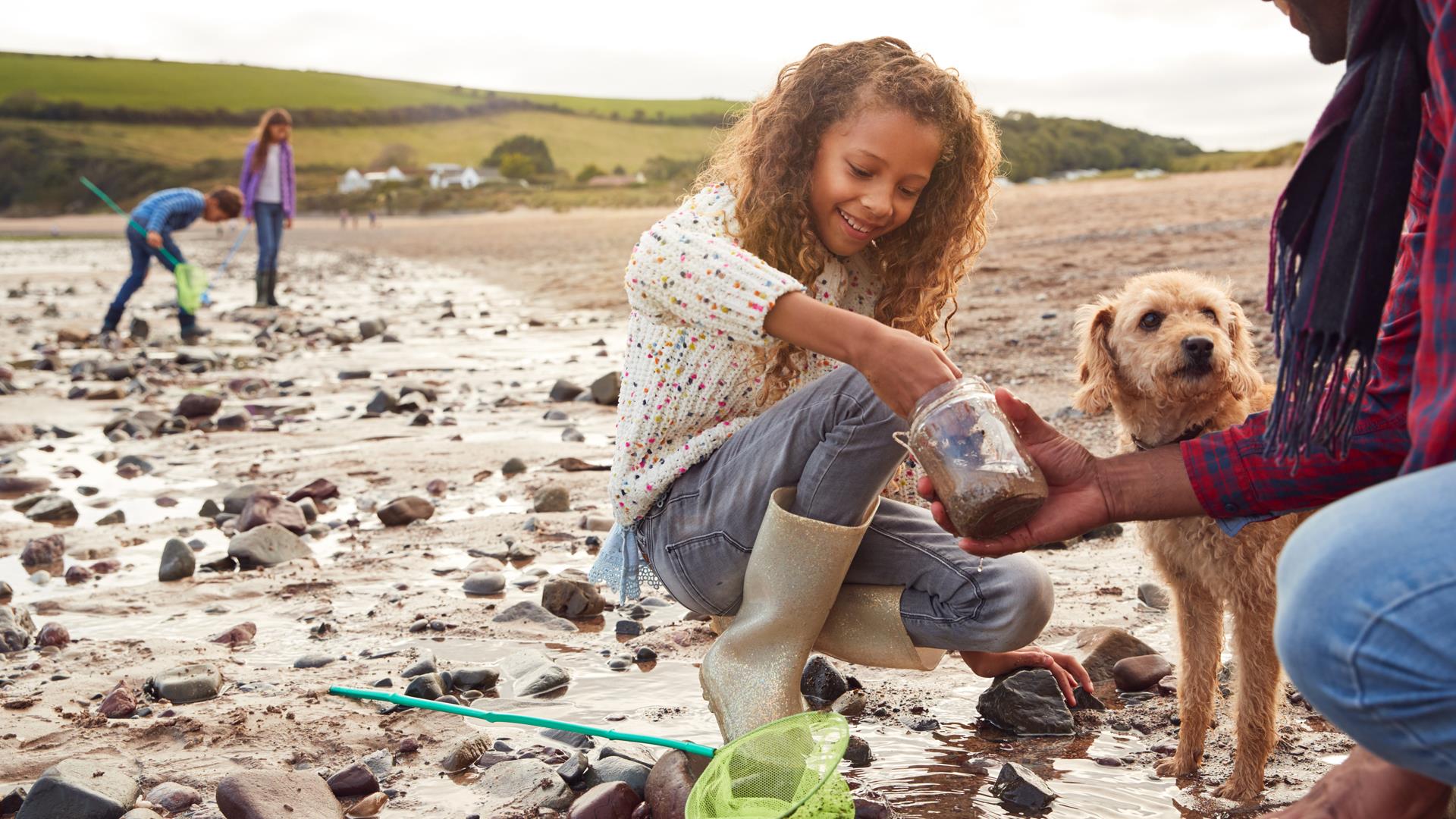
Rockpooling is a family-friendly coastal activity where you can explore shallow pools the tide leaves behind. Turn over rocks, observe sea creatures up close and safely return them to their habitat.
In this ultimate rockpool guide, we’ll walk you through everything you need to know to rockpool safely, including essential equipment, species to spot, expert tips, and the best rockpooling locations in the UK. We’ve also listed our nearby campsites, so once you're done exploring the waters, you can continue your adventures on an outdoor getaway.
Equipment needed for rockpooling
Make sure you’re well equipped for rockpooling and bring the following:
- Transparent bucket
- Transparent jar or food container
- Small spade to gently move the sand
- Magnifying glass
- Camera
- Pen and paper to record any findings
- Waterproof jacket and clothing
- Sunscreen to protect yourself from UV rays
- Wellington boots with good grip
- Water bottle to keep yourself hydrated
- Travel backpack to store all your belongings
Worth noting: Avoid using a net when rockpooling, as small creatures can get stuck and be harmed.
How to stay safe when rockpooling
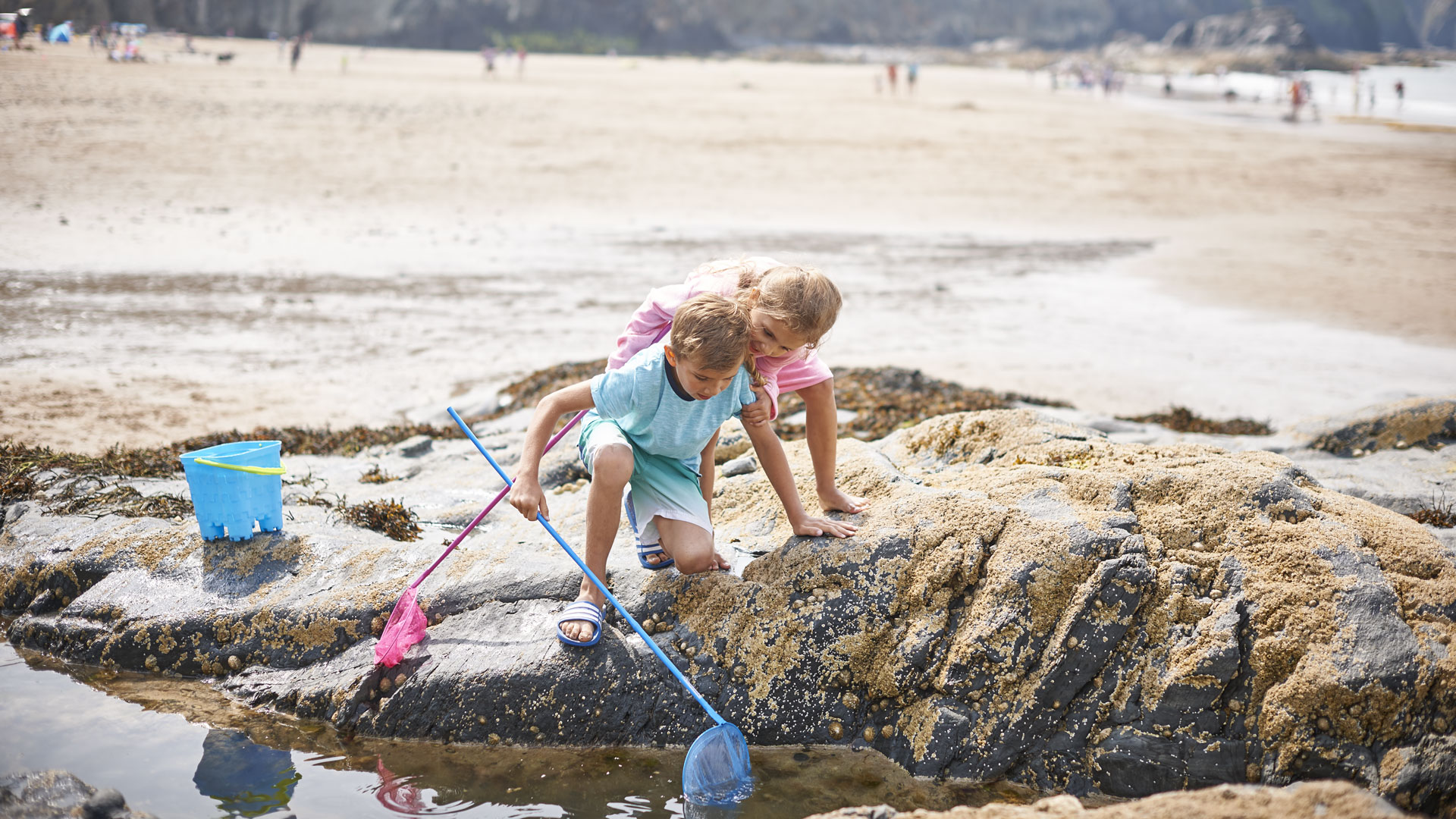
The last thing you want to do is harm another creature's habitat or put yourself in danger. Before heading out on your adventure, carefully read the following:
- Plan around the weather and tides. The best time to rockpool is when the tides are low – Spring tides are usually favoured as they expose the most unusual wildlife. Check the weather forecast before heading out on your adventure. If you’re rockpooling by the shore, heavy winds could be dangerous.
- Once you’ve found a good spot to rockpool, approach the water quietly and carefully. Avoid casting a shadow over the water because that could intimidate any sea creatures.
- Peer into the water and see if you can spot anything. If not, you can carefully turn over a stone or rock and see what’s hidden underneath.
- Spotted something? Take a closer look by slowly lowering your bucket into the water and scooping out the creature. If you need to investigate further, use the transparent jar to pick out the individual creatures and take a closer look. Here, the magnifying glass can come in handy, but avoid using it in direct sunlight.
- Record your findings or take a picture.
- Do not leave the sea creatures in the bucket for too long, as the change in temperature could cause them stress. Be gentle with the creatures and safely return them to where you found them by submerging your bucket into the water. Avoid tipping your bucket or aggressively putting them back.
Common creatures found in rockpools

Every rockpool is unique, and the creatures you can find will vary. Here’s a sneak peek into what you might spot. Download our rockpool creature checklist to take it with you.
Crabs
Crabs are among the most commonly spotted creatures in UK rockpools, with several fascinating species to identify:
- Shore crab – the most common crab, often green or brown.
- Velvet swimming crab – known for red eyes and fast movement—be careful, they can pinch!
- Spider crabs – the spiny spider crab and European spider crab can be found in UK rockpools; you can identify them by their long spiny legs.
Shrimp
Rockpool shrimps are commonly found in the UK, they’re translucent with dark brown stripes. The common prawn is another species you’ll often spot just as they’ve spotted you and darted back into their hiding place.
Starfish
These rockpool predators are always an exciting find. The common starfish can be 10 – 30cm and live for up to 10 years!
Blennies
These fish are commonly found in UK rockpools and have adapted very well, with fantastic camouflaging, the ability to survive out of water for a long time and even the ability to jump.
Anemones
The beadlet anemone is the most common in the UK. You’ll see anemones looking like red or orange blobs stuck to rocks. When the tide comes in, their tentacles become visible, and they use these to catch prey like small fish.
Mollusks
Mussels, limpets and periwinkles are common features of a rockpool.
Olive squat lobsters
The feisty, clawed crustaceans are experts at evading capture but if you’re quick enough, you might be able to catch a glimpse of one.
Best rockpools in the UK
If you’re looking for the best place to rockpool and find unique creatures, then sheltered rocky shores, beaches, boulders and piers, which have many nooks and crannies, are where you’ll need to search. Here is a list of top spots in the UK that are perfect for rockpooling.
Caswell Bay, South Wales
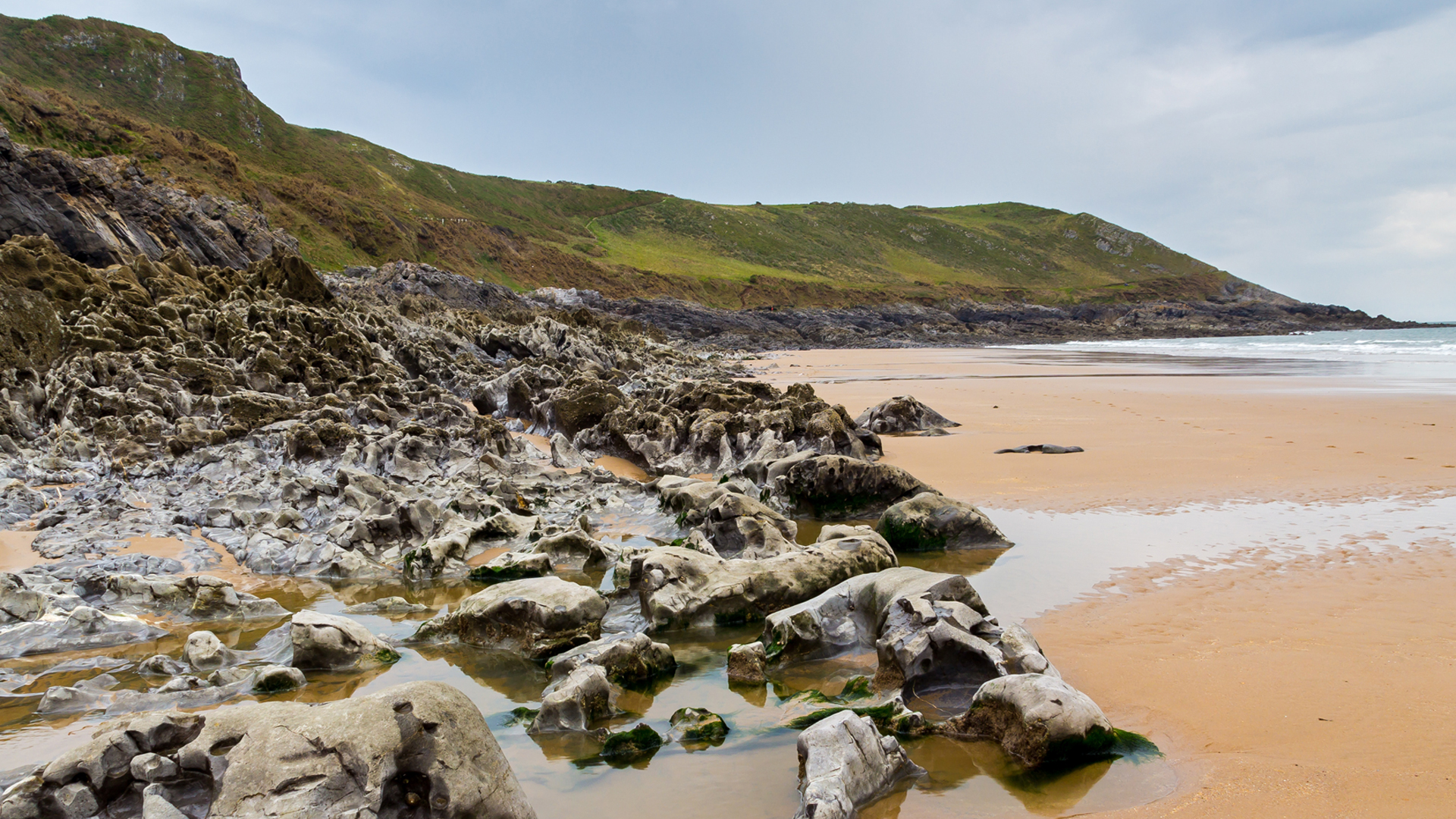
With many rock pools to explore, Caswell Bay is a great spot to find a diverse range of sea creatures.
Common rockpool creatures: you’ll see shore crabs, periwinkles, topshells, blennies, anemones, and, if you’re lucky, you may even spot an octopus or sea slug – which releases a purple ink colour when they feel threatened
Best time to visit: low tide is when all the pools are revealed. Tide times vary, so make sure you check before you go.
Stay nearby: discover our Rhandirmwym Club Site or view all campsites in Gower, South Wales.
Good to know: Langland Bay, a popular sandy beach with rockpools, is around a 30-minute drive away.
Wembury, Devon

Located on the shores of Devon’s coastline is Wembury, where you’ll find plenty of rocky shores, perfect for sea creatures to rest.
Common rockpool creatures: look out for limpets, beadlet anemones, shore crabs, starfish, and even sea scorpions!
Best time to visit: an hour before low tide to an hour after low tide.
Stay nearby: we have a brilliant selection of campsites in Devon to explore.
Good to know: you can visit Wembury Marine Centre to learn more about the area and join group rockpooling opportunities to learn tips and tricks on finding creatures.
Saltburn-by-the-Sea, North Yorkshire
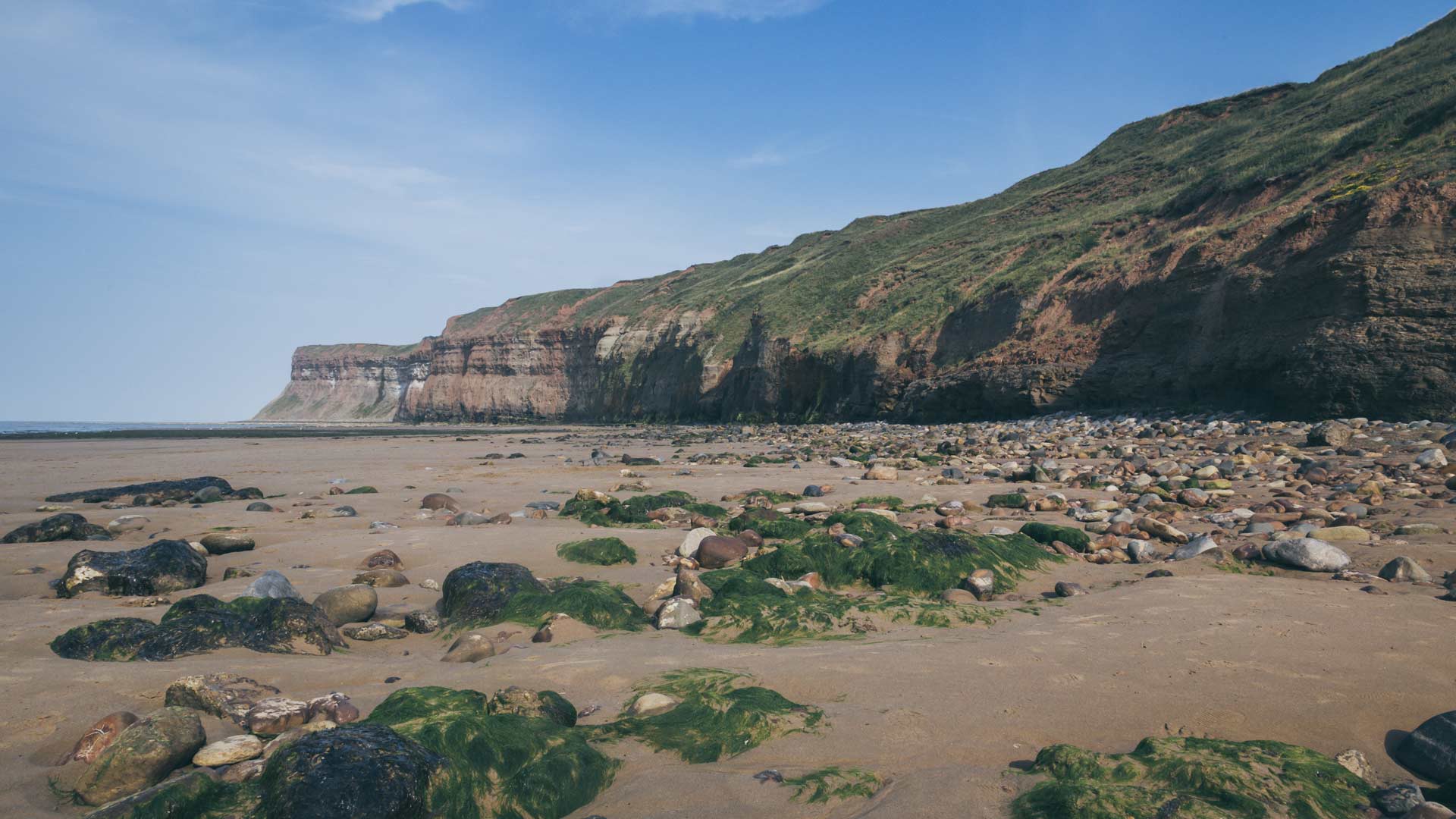
Saltburn-by-the-Sea has a brilliant variety of sea creatures to uncover, and once you’re done with the rockpools, you can enjoy the many shops and cafes that line the promenade.
Common rockpool creatures: hermit crabs, squat lobsters, shore crabs, sea slugs, periwinkles, limpets, molluscs, starfish, and brittle stars.
Best time to visit: an hour before low tide to an hour after low tide.
Stay nearby: discover our campsites in and near Saltburn-by-the-Sea.
Good to know: Saltburn-by-the-Sea has all the amenities you’d expect from a traditional seaside town. Enjoy a round of mini golf, try your luck in the arcades, or indulge in fish, chips, or ice cream while watching the world go by.
Seven Sisters Country Park, East Sussex
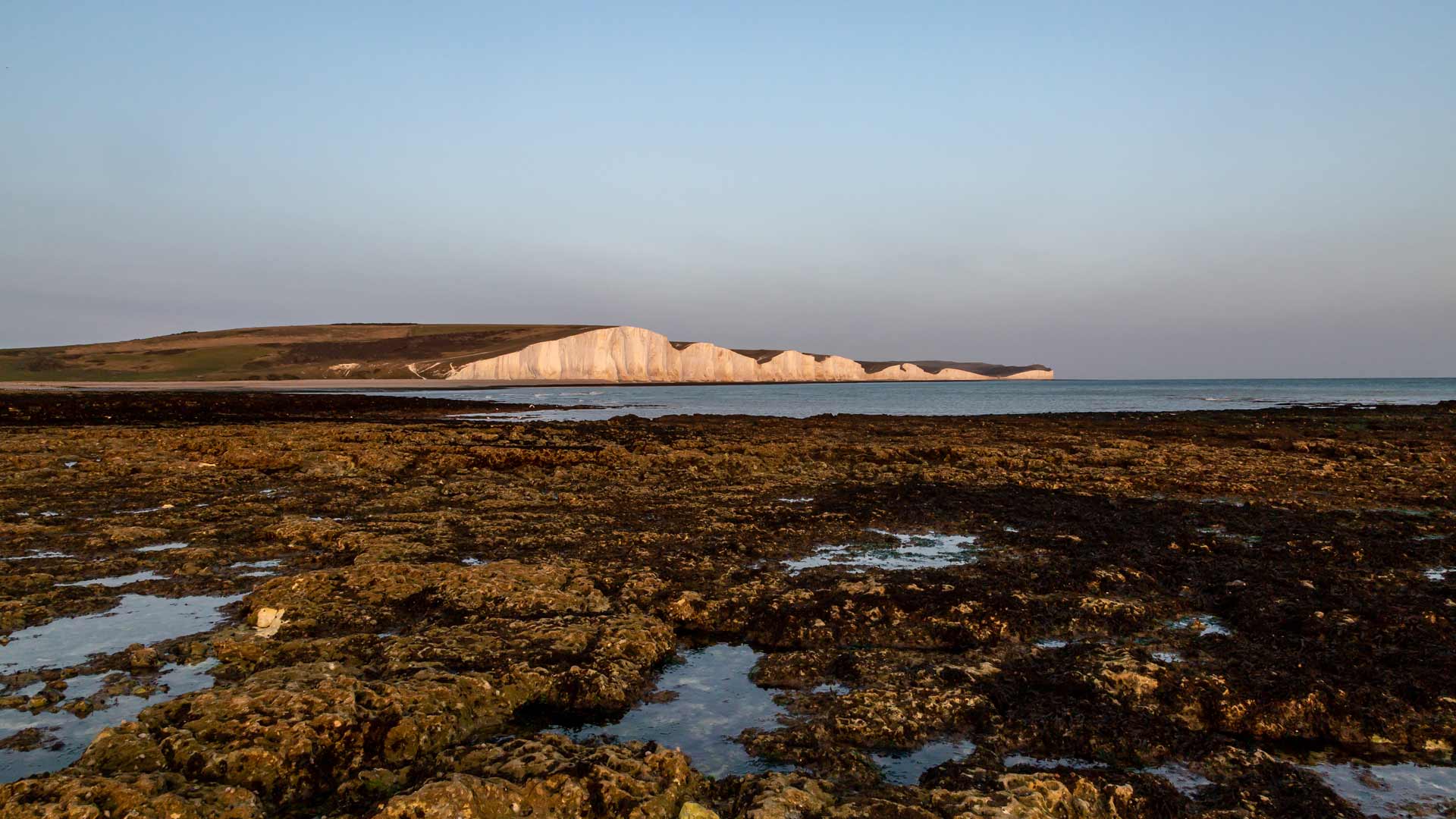
For a different rockpooling experience, visit the Seven Sisters Country Park in East Sussex.
Common rockpool creatures: at Hope Gap, located in the country park, you’ll find beautiful sea rockpool creatures such as beadlets, velvet swimming crabs and strawberry anemones.
Best time to visit: aim for either side of low tide to maximise your visit.
Stay nearby: check out our campsites in Sussex.
Good to know: Sussex Wildlife Trust also hosts rockpool excursions where you can join other explorers to discover the vast rock pools in the Seven Sisters Country Park.
Treyarnon Cove, Cornwall
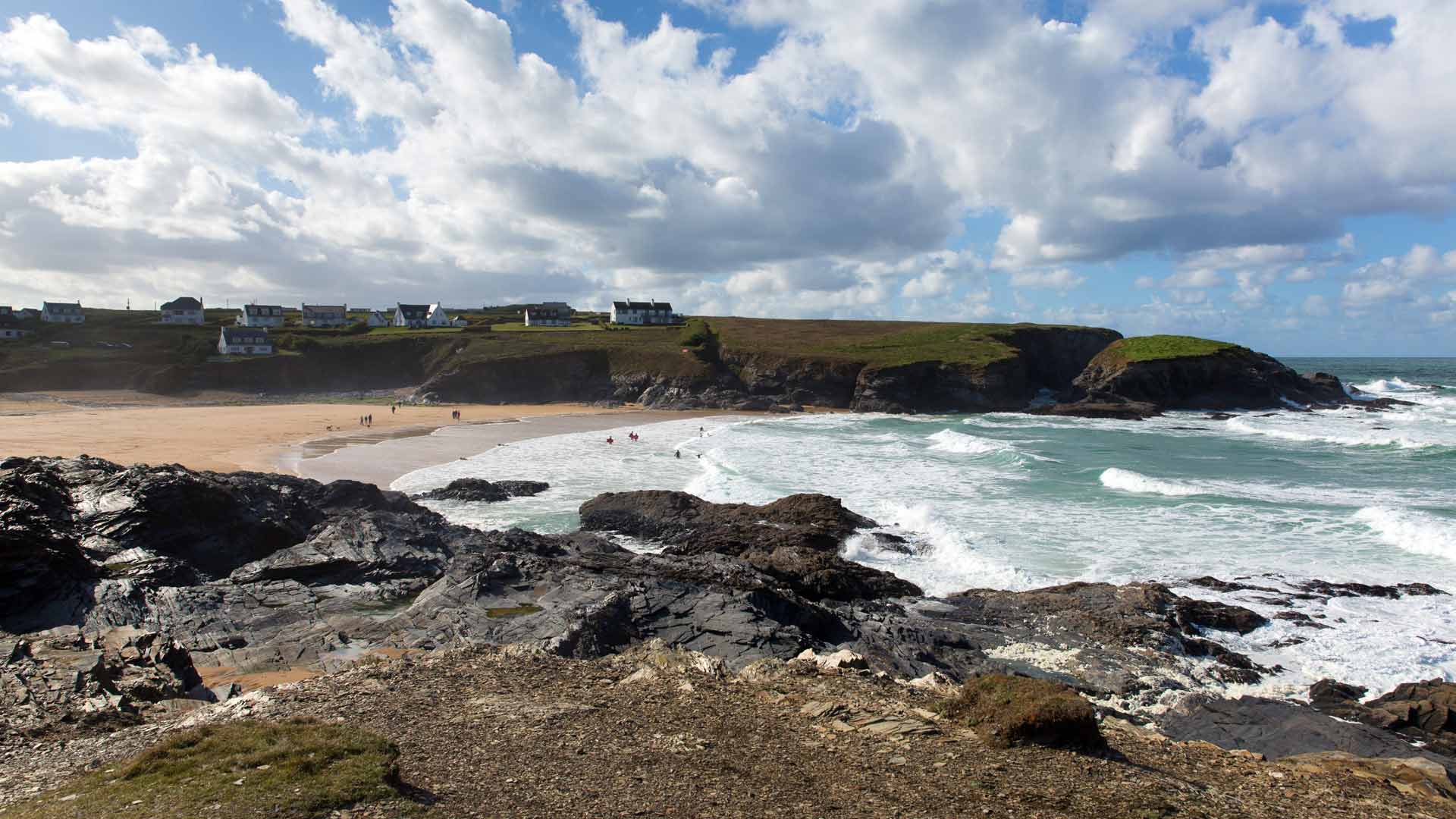
If you’re after a more accessible rock pool that’s perfect for kids and dogs, Treyarnon Bay in Cornwall is a good place to visit.
Common rockpool creatures: hermit crabs, blennies, topshells, beadlet anemones, cushion stars, and wrasse.
Best time to visit: the large rockpool at Treyarnon is above the water for a few hours either side of low tide, so check the tide times before visiting. It’s worth noting that there are no restrictions on dogs here.
Stay nearby: view our campsites in Cornwall.
Good to know: the large rockpool here is deep in places, so always keep an eye on children.
Kimmeridge Bay, Dorset

Not only does Kimmeridge Bay have an abundance of marine life, but being on the Jurassic Coast, you could also hunt for fossils!
Common rockpool creatures: sea snails, flat periwinkles, limpets, barnacles and small dog whelk.
Best time to visit: low tide but keep a close eye on tide times as parts of the bay can be cut off in high tide.
Stay nearby: discover our campsites in Dorset.
Good to know: the Fine Foundation Wild Seas Centre has interactive displays and information on the bay and its rockpools.
North Berwick, Scotland
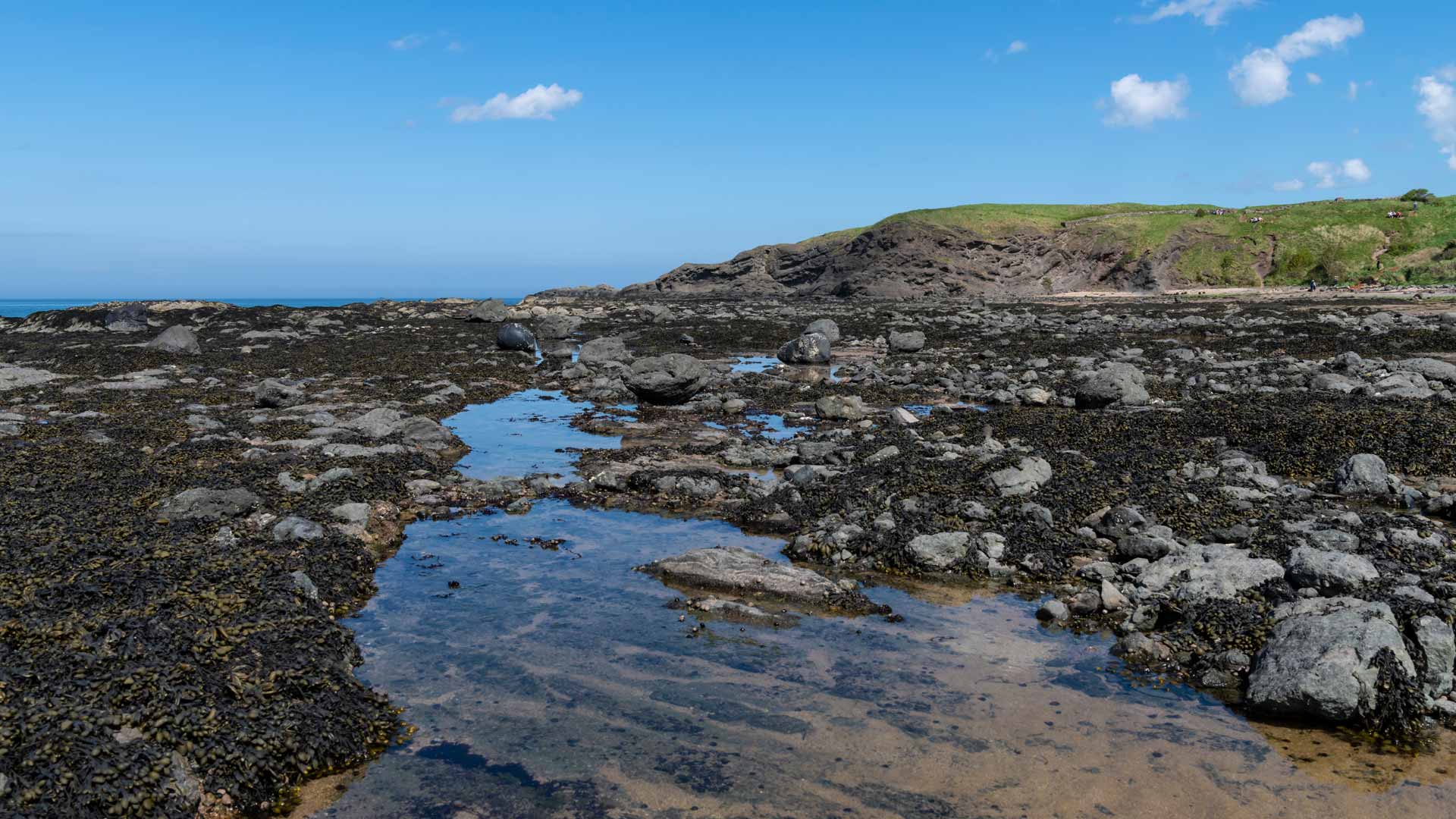
There are several beaches in North Berwick which are great for rockpooling; try Milsey Bay and Seacliff Beach.
Common rockpool creatures: crabs, starfish, anemones and even lobsters!
Best time to visit: arrive an hour before low tide to get the most time exploring the pools.
Stay nearby: Dunbar Club Site in East Lothian
Good to know: the Scottish Seabird Centre hold rockpool rambles led by a guide to help you learn more about the wildlife in the area.
Embleton Bay and Newton Links, Northumberland
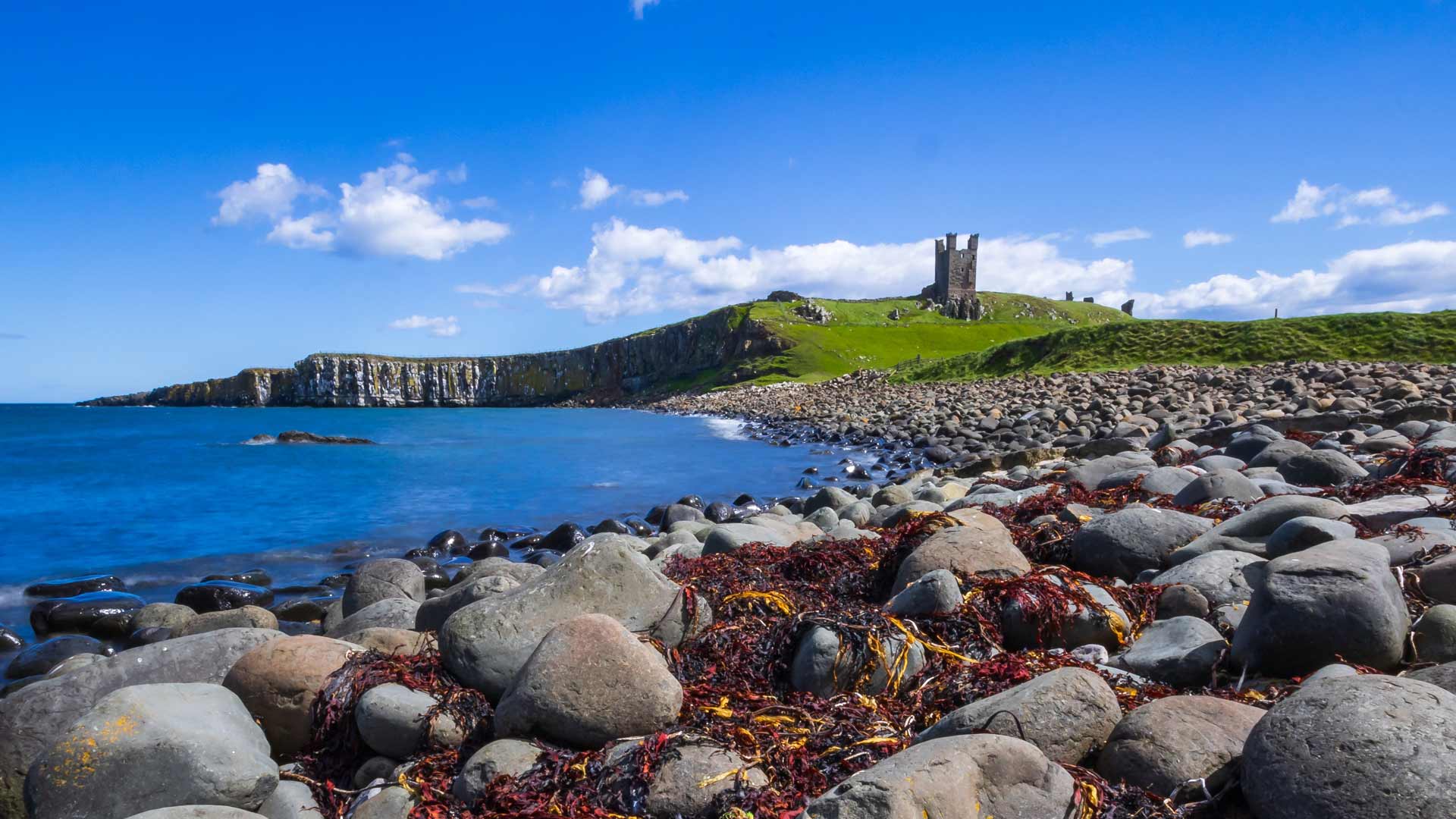
These beautiful sandy beaches are perfect for rockpooling. Newton Links is protected by the National Trust and has dunes as well as rockpools to explore.
Common rockpool creatures: crabs, barnacles, starfish, shrimp and lots of seaweed
Best time to visit: most of the rockpools on this stretch are exposed an hour either side of low tide.
Stay nearby: there’s a great selection of campsites in Northumberland to choose from.
Good to know: this area has so much to discover, from Hadrians Wall to fascinating castles like Alnwick.
West Runton Beach, Norfolk
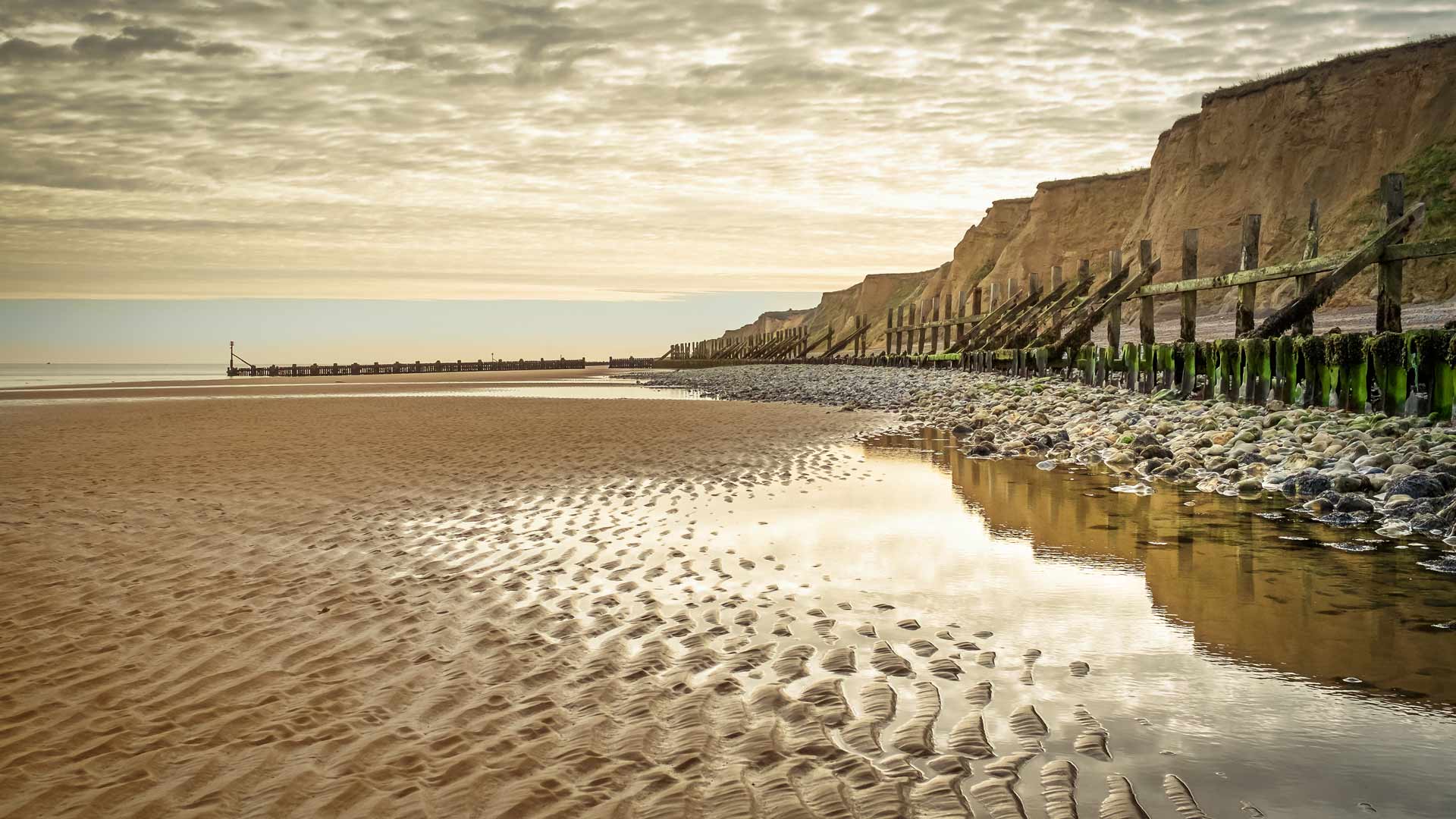
The Blue Flag awarded West Runton Beach is a brilliant spot for rockpooling. At low tide, the largest chalk reef in Europe is revealed, which has countless pools to explore.
Common rockpool creatures: black squat lobsters, velvet swimming crabs, shore crabs, beadlet anemones and more.
Best time to visit: 1-2 hours before low tide is the ideal time to explore the pools on West Runton Beach.
Stay nearby: view all campsites in Norfolk, including our West Runton Club Site, which is perfectly situated for exploring West Runton Beach.
Good to know: keep an eye on the Norfolk Wildlife Trust website for any events to learn more about and celebrate local marine life.
Stay at a local campsite near the beach
This isn’t an exhaustive guide – there are beaches all over the UK’s coast which you’ll find are fantastic for a few hours spent rockpooling. View all our coastal campsites or search by your destination on Siteseeker.
